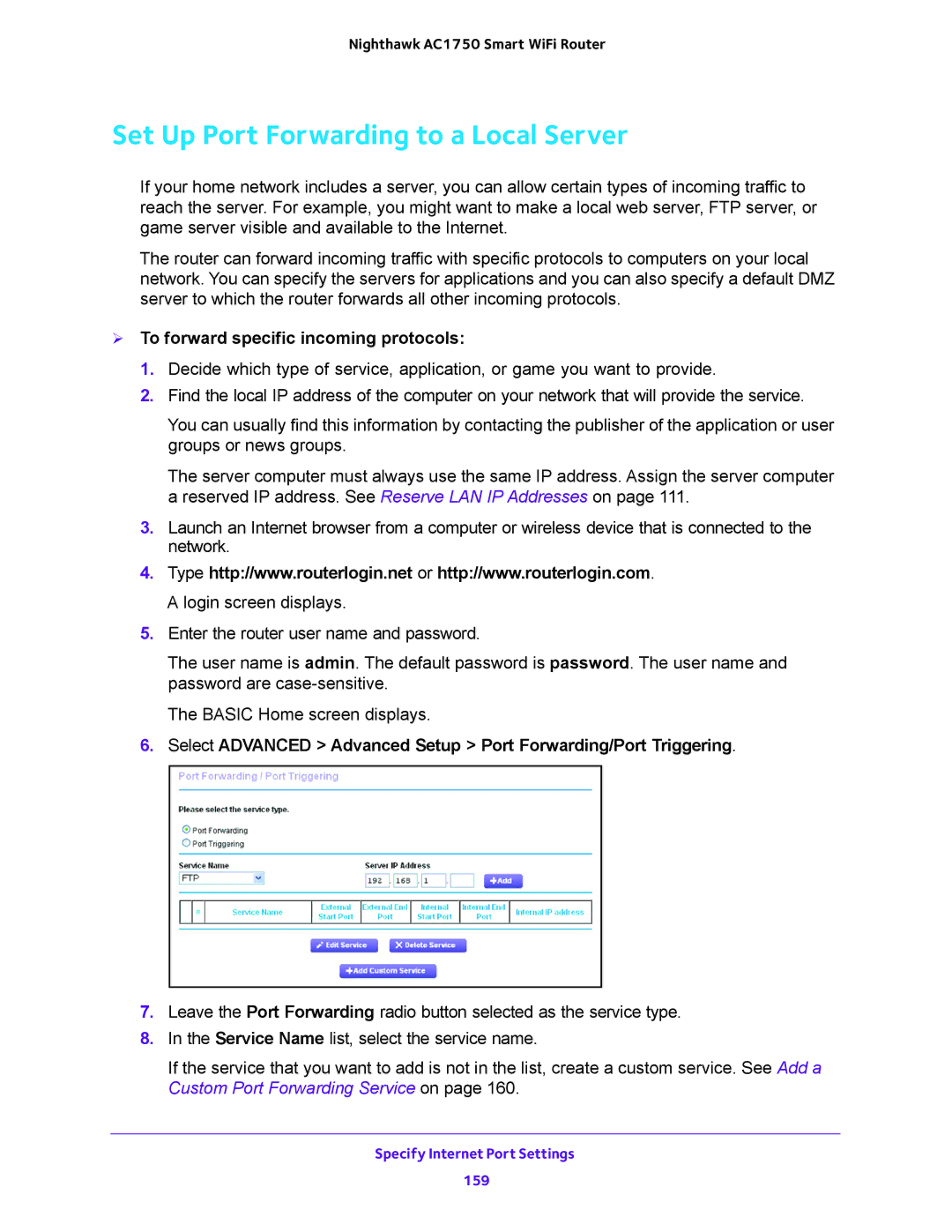
Nighthawk AC1750 Smart WiFi Router
Set Up Port Forwarding to a Local Server
If your home network includes a server, you can allow certain types of incoming traffic to reach the server. For example, you might want to make a local web server, FTP server, or game server visible and available to the Internet.
The router can forward incoming traffic with specific protocols to computers on your local network. You can specify the servers for applications and you can also specify a default DMZ server to which the router forwards all other incoming protocols.
To forward specific incoming protocols:
1.Decide which type of service, application, or game you want to provide.
2.Find the local IP address of the computer on your network that will provide the service.
You can usually find this information by contacting the publisher of the application or user groups or news groups.
The server computer must always use the same IP address. Assign the server computer a reserved IP address. See Reserve LAN IP Addresses on page 111.
3.Launch an Internet browser from a computer or wireless device that is connected to the network.
4.Type http://www.routerlogin.net or http://www.routerlogin.com. A login screen displays.
5.Enter the router user name and password.
The user name is admin. The default password is password. The user name and password are
The BASIC Home screen displays.
6.Select ADVANCED > Advanced Setup > Port Forwarding/Port Triggering.
7.Leave the Port Forwarding radio button selected as the service type.
8.In the Service Name list, select the service name.
If the service that you want to add is not in the list, create a custom service. See Add a Custom Port Forwarding Service on page 160.
Specify Internet Port Settings
159
